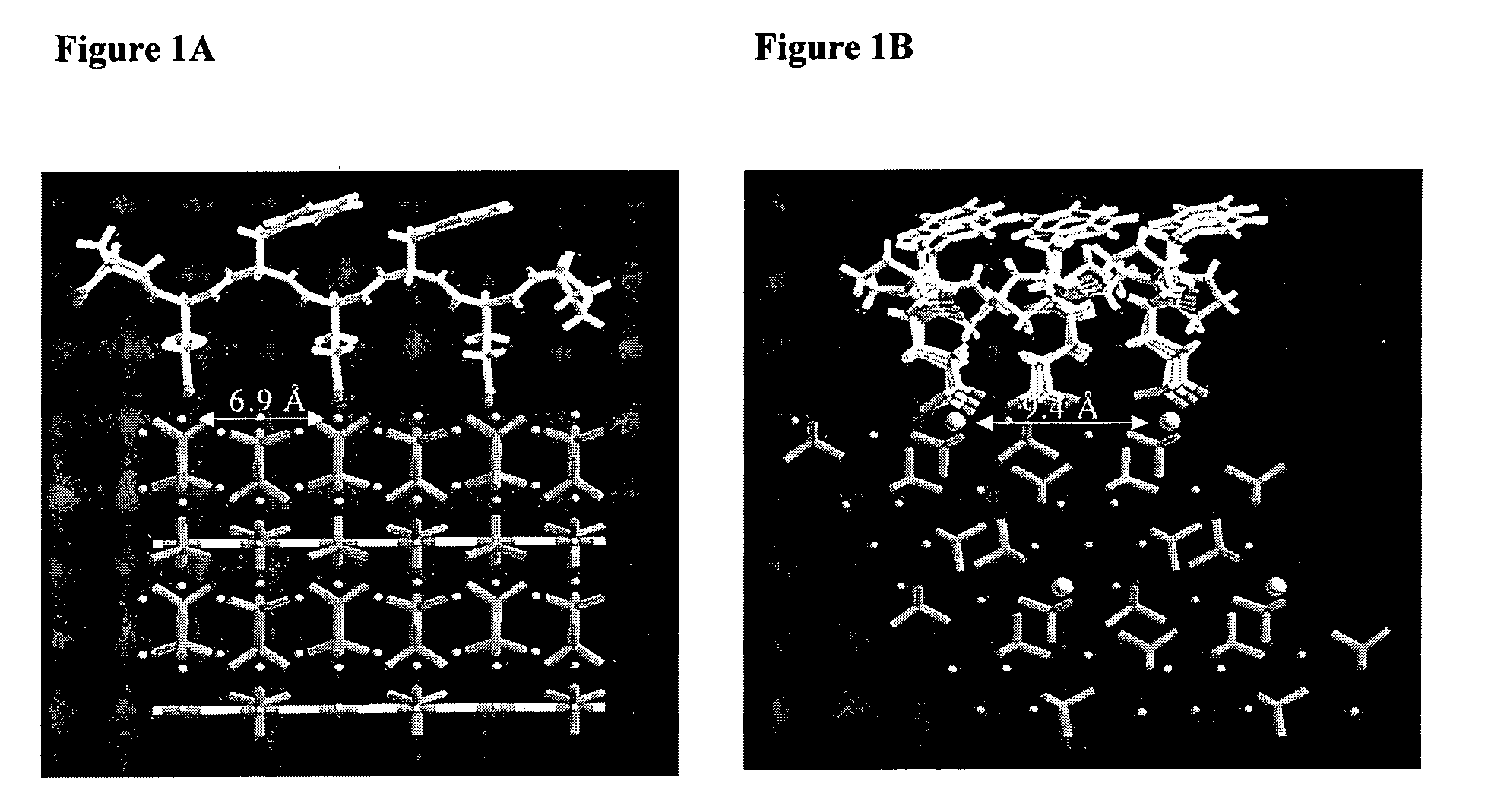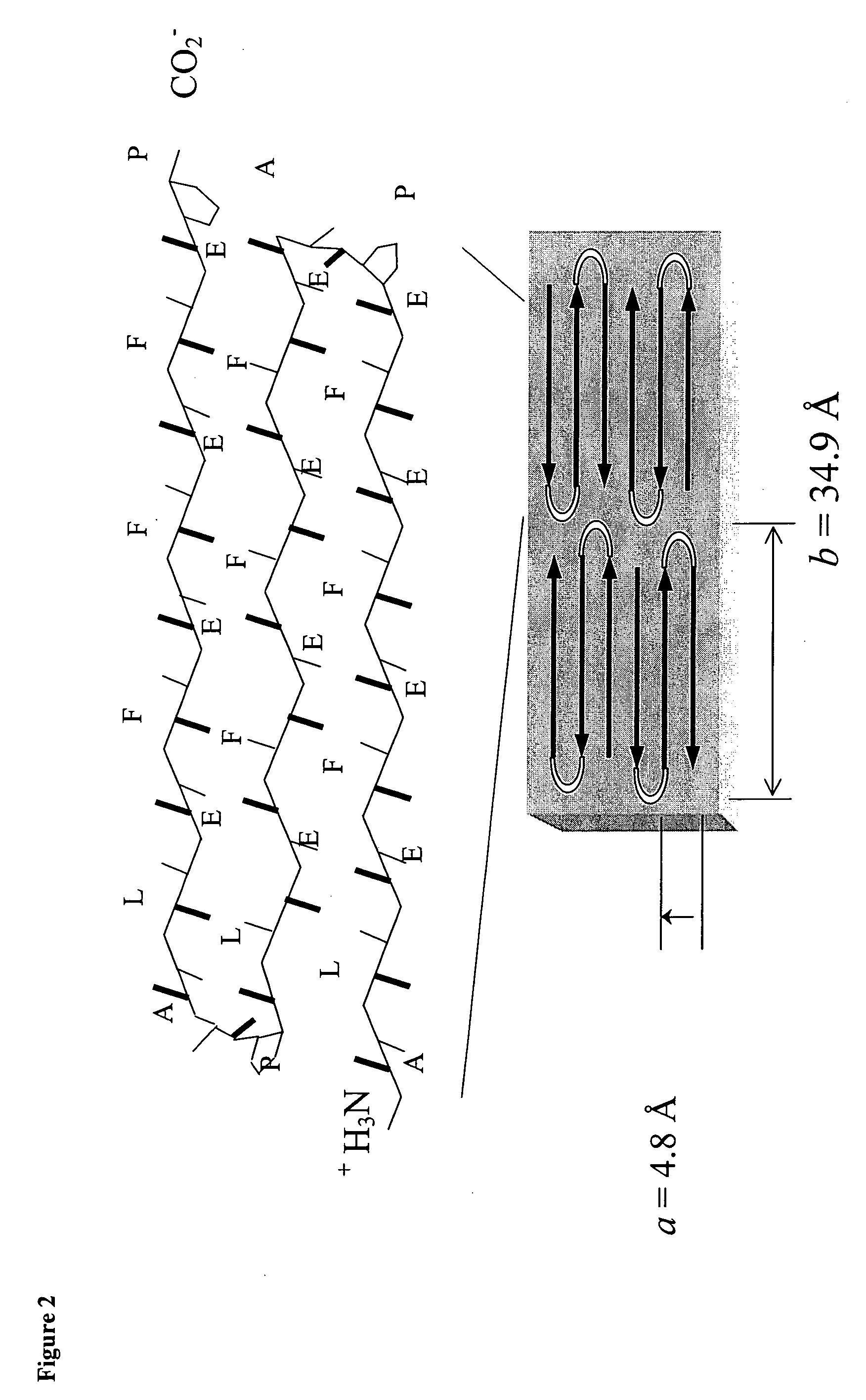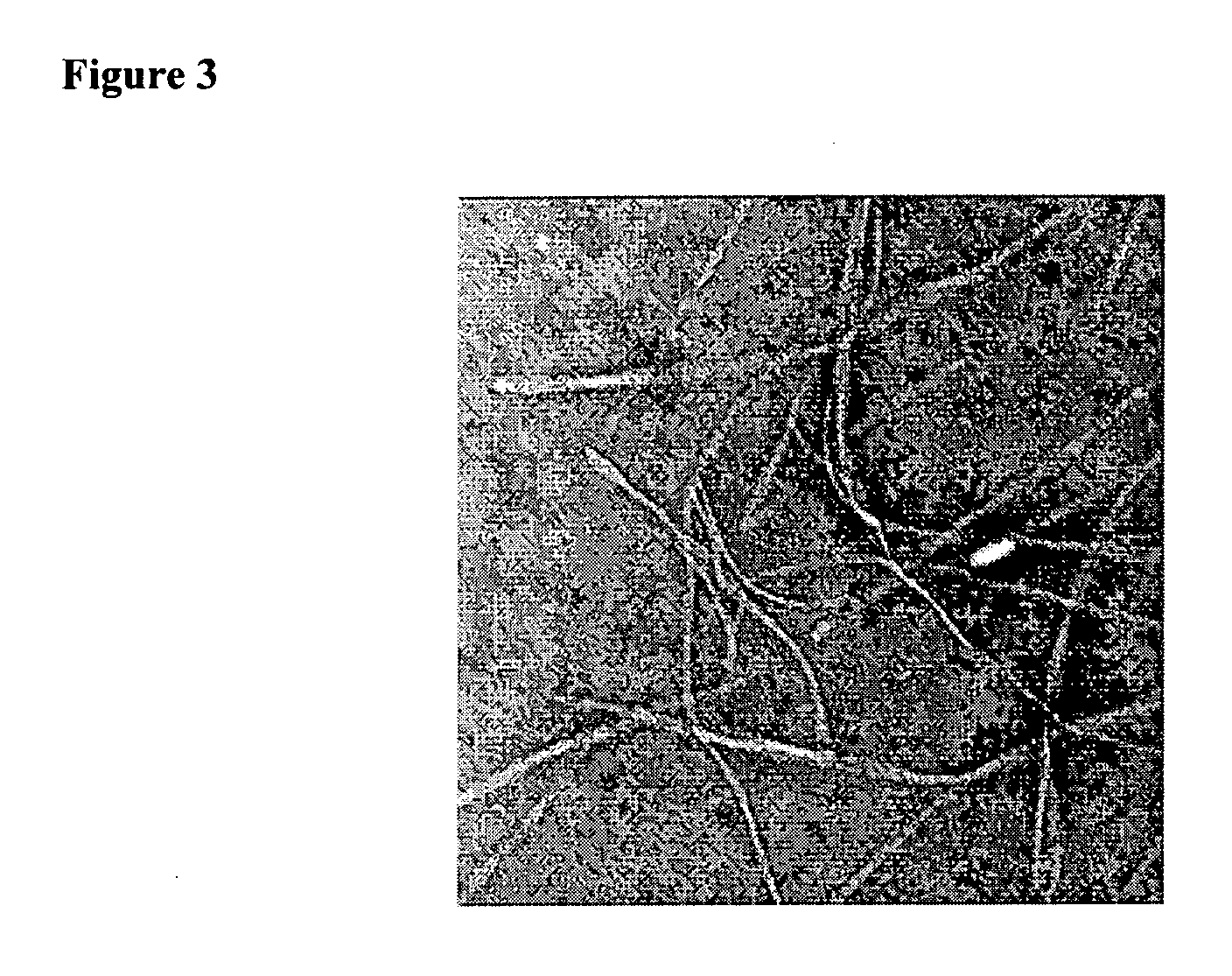Amphiphilic peptides and hydrogel matrices thereof for bone repair
a technology of amphiphilic peptides and hydrogel matrices, which is applied in the field of tissue engineering, can solve the problems of inability to meet the criteria required for successful tissue engineering, lack of many extra cellular like functions, and rigidity of ha, so as to accelerate the healing rate, enhance bone repair, and enhance the ingrowth of bony in various prosthetic devices.
- Summary
- Abstract
- Description
- Claims
- Application Information
AI Technical Summary
Benefits of technology
Problems solved by technology
Method used
Image
Examples
example 1
Peptide Synthesis
[0229]The peptides were synthesized by conventional solid phase synthesis methods, using either tBOC or FMOC chemistry. The peptides of the invention may further be prepared using recombinant DNA techniques known in the art.
example 2
Preparation of Peptide Hydrogel
[0230]In general the matrix can be formed in the following way: dissolving the peptides at high pH above about 8) using either buffer (Tris) or NaOH. With the addition of the peptide the pH of the mixture drops and hydrogel may form. The peptide that is dissolved in alkaline solution can be titrated with HCl to a pH ˜7 to form yield a gel. The same can be done with HA or other mineral particles incorporated in the first step (low pH). Upon gelation the particles get trapped in the gel.
example 3
[0231]In vitro biomineralization was performed with monolayer peptide films deposited on SBF1.5 solution (×1.5 ionic profile of blood serum Tris buffered to pH 7.35; Na+213.0, K+7.5, Ca+2 3.8, Mg+2 2.3, HCO3−6.3, Cl−223.0, HPO4−1.5, SO4−2 0.75 mM). Mineralization was also obtained on hydrogels that were in contact with SBF1.5 solution.
[0232]A considerable amount of work has been done in-vitro in order to decide whether acidic amino acids are indeed effective in HA formation. Usually these studies are done by exposure of surface active material to ionic solution followed by evaluation of HA nucleation degree on this surface. Ionic solutions, in which nucleation occurs, have a few variables such as, minerals components and their concentrations, buffer capacities, pH, temperature and preparation procedures. The two essential components of SBF1.5 are calcium and phosphate. The solution was prepared according to the prototype-SBF procedure developed by Kokubo (1...
PUM
| Property | Measurement | Unit |
|---|---|---|
| Fraction | aaaaa | aaaaa |
| Molar density | aaaaa | aaaaa |
| Molar density | aaaaa | aaaaa |
Abstract
Description
Claims
Application Information
 Login to View More
Login to View More - R&D
- Intellectual Property
- Life Sciences
- Materials
- Tech Scout
- Unparalleled Data Quality
- Higher Quality Content
- 60% Fewer Hallucinations
Browse by: Latest US Patents, China's latest patents, Technical Efficacy Thesaurus, Application Domain, Technology Topic, Popular Technical Reports.
© 2025 PatSnap. All rights reserved.Legal|Privacy policy|Modern Slavery Act Transparency Statement|Sitemap|About US| Contact US: help@patsnap.com



